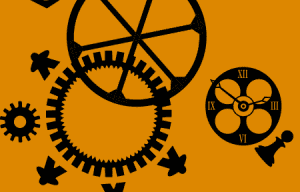
I am an actor as well as a game-designer. And so, when designing games, I often think of the world being created around and within the game. I call this, “the world of the play.” This is also the theme, or the story of the game; and there is much to say about it. But, the focus of this article is
USING MECHANICS IN A GAME DESIGN TO ENHANCE THAT WORLD YOU’RE CREATING, “THE WORLD OF THE PLAY.”
A NEW WORLD!
A good game always creates a new world in which the players exist for some amount of time. That’s one reason we play games, to escape reality and play in a new world for a while. Sometimes this world is obvious; in RPGs, the point is to take on a role inside a world different from our own. But, I think that even games like Apples to Apples and Scrabble offer their own world of the play. At the very least, all who are playing agree to work within a set of rules and abide by them together. Rules, that in everyday life, do not apply. That is a new world created!
SO, IF A GOOD GAME ALWAYS CREATES A NEW WORLD, THEN A GOOD MECHANIC ALWAYS SUPPORTS AND ENHANCES THAT WORLD.
STORY DRIVEN MECHANICS
In the creating of our game, The Amberden Affair (coming August 2014… shameful plug), the story, the world, the experience we were striving to create for the players was the foundational decider of the mechanics we would employ. And, in order to stay true to the world of the play, our mechanics underwent major surgery many times. Since we started with the world, we knew we had to fit mechanics into that world. If any aspect of the game play took the players out of the world for even a second, that aspect needed to change. For example, The Amberden Affair takes place at a high class party, and originally players took turns separately in order to accomplish certain tasks. We soon realized that if our world is a party in which all those in attendance are mingling, it doesn’t make sense that I would stand still and silent at the party waiting for you to move – then you stand still and silent waiting for me. That is how we came to a mechanic of simultaneous play, no individual turns, and that is now my favorite aspect of the game. A mechanic born out of the world of the play.
Where I tend to start with a story and find mechanics to fit, some designers may start a game design with a mechanic in mind, and then build a world around it. That is fine. You may have an idea for a new mechanic or a twist on an old favorite. Great! The challenge there is to build a world in which that mechanic makes sense. And not only makes sense, but develops and supports the world around it.
FORBIDDEN DESERT
One great example of what I’m talking about is Forbidden Desert, designed by Matt Leacock. I don’t know which direction he designs, either from story to mechanic, or mechanic to story. But either way, there is seamless integration of the two in his games. What I love about Forbidden Desert is that the mechanics challenge the players to treat the game as if it were an actual desert. Get careless in the sun, and you will run out of water and die. Spread your team out too thin and you’ll die for the inability to help each other in need.
THESE TRUTHS OF DESERT SURVIVAL ARE BROUGHT TO THE GAME THROUGH WELL-CRAFTED MECHANICS.
So, when designing your mechanics, consider the world in which they must function. And then be willing to give up a mechanic if it just doesn’t work. File it, and use it in another game, perhaps. But stay true to the experience, the story, you’re creating in a game. Keep the world of the play, and your players will want to experience that world over and over again.







